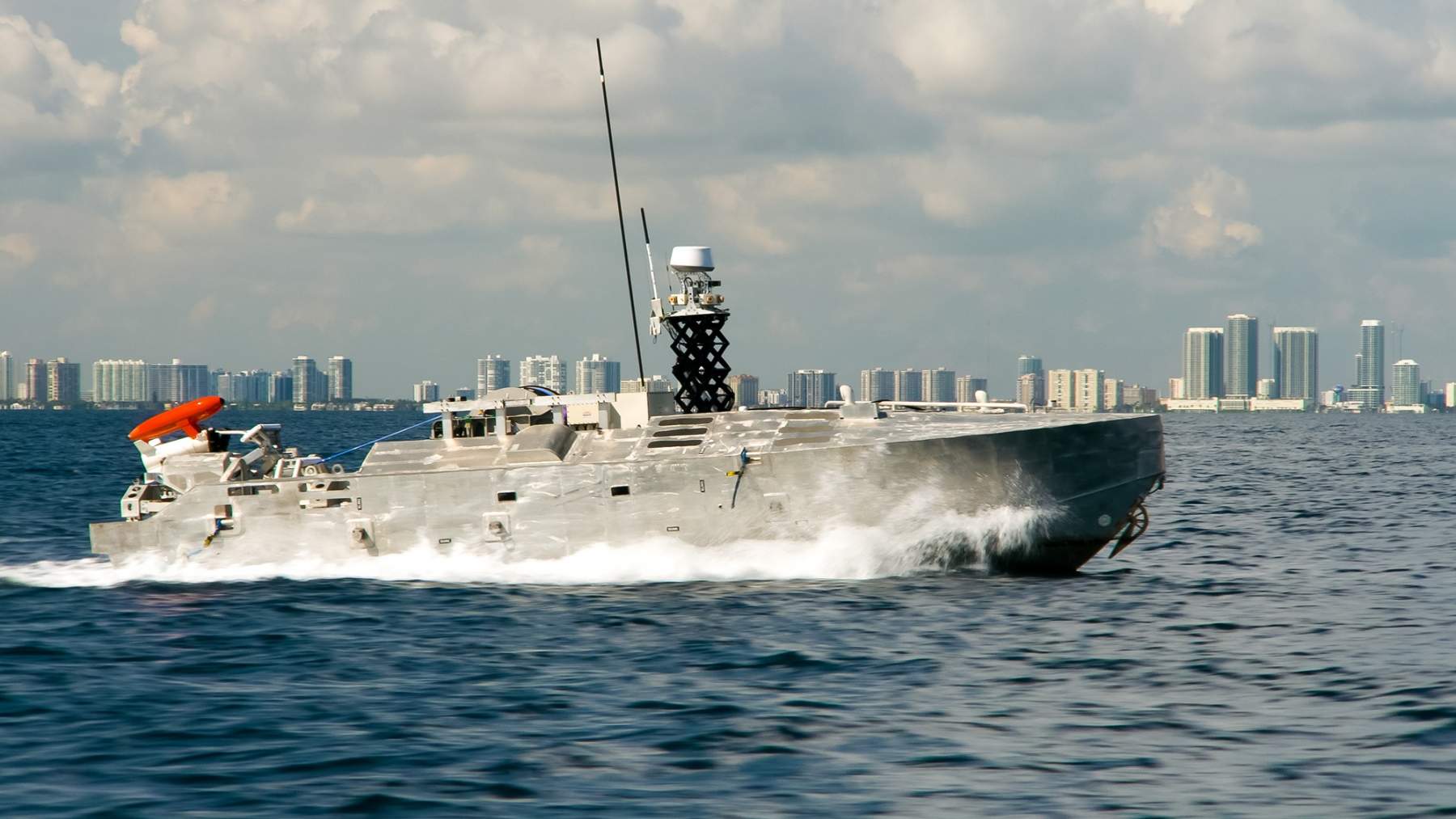Textron Systems, Hunt Valley, Maryland, is awarded a $41,699,951 cost-plus-fixed-fee and cost-only modification to previously awarded contract N00024-14-C-6322 for engineering and technical support, incidental materials, and travel for the Unmanned Influence Sweep System (UISS) Unmanned Surface Vehicle (USV) program. The Unmanned Influence Sweep System (UISS) is a self-propelled, semi-autonomous surface vessel developed by Textron Systems for the U.S. Navy. The system is part of the US Navy’s suite of mine countermeasure technologies and can be deployed to acoustically and magnetically sweep naval mines. Work is expected to be completed by April 2023. The Naval Sea Systems Command, Washington, D.C., is the contracting activity.
The UISS USV is driven by a diesel engine. The vessel has a maximum range of 140km and can endure at sea for more than 20 hours. It has a towing capacity of about 4000lb (1,814.36g) while traveling at a speed of 20kt. The UISS carries a range of sensors to sweep magnetic, acoustic, and magnetic-acoustic combination mine types. It can be fitted with payloads such as side-scan sonar, non-lethal weapons, mine neutralization, intelligence, surveillance, and reconnaissance (ISR) sensors. The system contains an MCM USV integrated with towed minesweeping payload. The MCM vessel is expected to carry payload delivery systems (PDS) for minesweeping, mine hunting, and mine neutralization. It can tow a modified Mk-104 acoustic generator and a magnetic minesweeping cable.

The MCM package includes Raytheon’s AN/AQS-20C sonar comprising two side-facing sonars, a gap filler sonar, and a forward-looking sonar. The AN/AQS-20C sonar supports mine hunting operations through its advanced acoustic and electro-optic sensing capabilities. It can simultaneously detect, localize and classify bottom, moored, close-tethered and volume-moored mines. An electro-optic identification device is fitted on the towed sonar to help identify bottom mines. A winch system is used to deploy the towed sonar. The sonars enable the detection of mine-like objects from the seafloor to the near-surface in a single pass. Northrop Grumman’s AN/AQS-24B towed sonar provides acoustic images to detect, classify and localize bottom and moored mines.
The UISS is designed to be integrated with the LCS as part of the mine countermeasures mission (MCM) package. The system includes an MCM USV, an unmanned surface sweep system (US3), and a sensor package. The MCM USV is expected to replace the US Navy’s aging Avenger-class minesweeping ships and MH-53E Sea Dragon helicopters. The all-aluminum surface vessel can be launched from either shore or the LCS and vessels of opportunity. The US3 includes a magnetic field generator, an acoustic generator, a power system, and other associated equipment. The UISS will provide an unmanned, off-board minesweeping capability in littoral areas. It is designed to enable mine clearance in sea lanes, fleet operating areas, straits, choke points, and amphibious objective areas.











